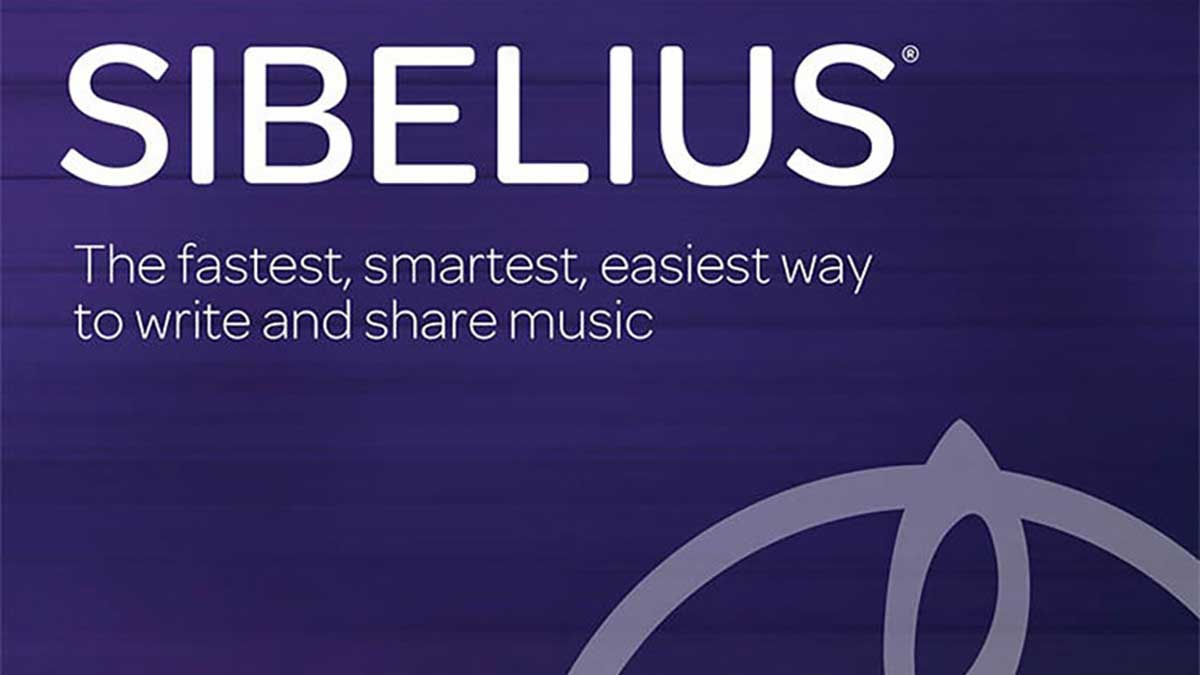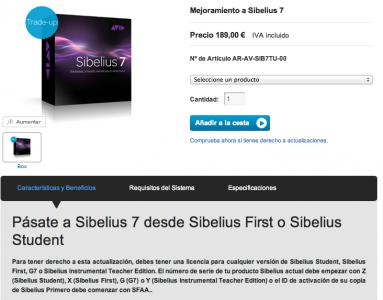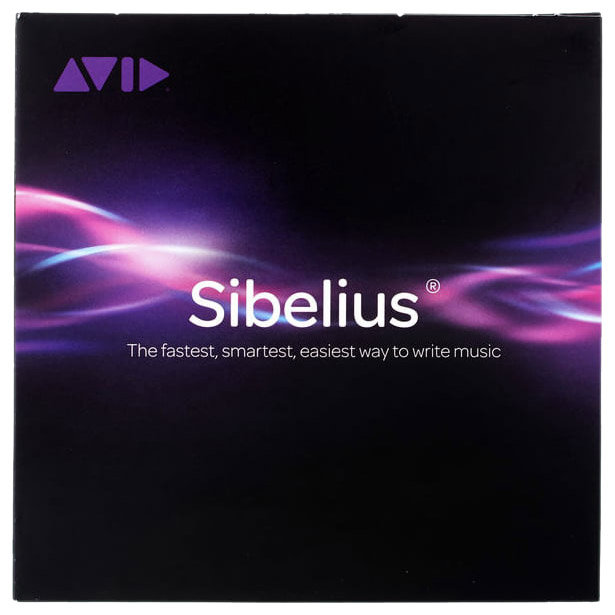
If you deploy Sibelius in your environment, you may or may not have a Sibelius Licence Server to manage the checking in and out of your licenses. From personal experience, it’s immensely helpful in terms of license management – only having licenses in use when machines are actively running the software-, managing license upgrades, as well as managing deployments. While not every environment is the same, if you happen to have standalone Sibelius licenses instead of a multi-seat network license, I would highly recommend it.
This post covers the process of setting up a Sibelius License Server and deploying Sibelius to your Macs. I obviously don’t know your network, so there may be some “gotchas” on that side of things that will require working with your Network Admin to get this working.
I have been using Sibelius 7 for about 2 years and yesterday decided to update to Sibelius 7.1.3 – free download. The worst mistake I could have made. After downloading I was instructed to ACTIVATE but in spite of following the instructions and using the system ID and Activation ID’s given, I am blocked. If your Sibelius 7.1.x installation is brand new, the System Id and Activation ID are provided with the installation disks. If your Sibelius 7.1.x installation is an update from a pre-7.1 Sibelius installation that used a Serial number, then you can upgrade your serial number to the new System ID/Activation ID pair by filling in the form at.
The component of this deployment that I found recently some folks were missing (and we missed initially as well) was the local LicenceServerInfo file. This is what tells Sibelius where to communicate in order to check out licenses, and for whatever reason isn’t well documented.
See more below the jump.
LicenCe vs. LicenSe: a Disclaimer
If you live in the US, this disclaimer is for you!
When we’re talking about the word license as a noun, the spelling is different in the US than the rest of the world. It’s because we like being different?

If you do a quick search online, you’ll find articles like this one that show in the US it’s a license with an “s”, while elsewhere it’s spelled licence with a “c”.
While you might be thinking “potatoe potatoe”, the spelling actually matters in the case of Sibelius when configuring your Macs as the local file that points to your license server does spell it with a “c”. Since I am from the US, I will use the license spelling wherever I can … except when it matters.
You’ve been disclaimed!
Multi-Seat Network License
In order to take advantage of the Sibelius Licence Server, you need to get yourself a multi-seat network license. You can get this license with as many seats as you need. Being in the New York area, our nearest and long-time stellar Audio/Video company and Avid license vendor has been Sweetwater. So if you’re thinking about making a purchase and you happen to be in NY, definitely reach out to them.
You can see more details about the license and how it works here.
For a detailed Sibelius Licence Server install & upgrade guide, see this Avid KB article for the complete Sibelius Licence Server Guide.
Install Sibelius Licence Server
You’ll need to login to your Avid account and download the installer. We’ve opted to run our various license servers on a single Mac mini, but whatever makes sense for you and your environment. You’ll also need your System ID – listed next to your Sibelius entry under your Avid products – and your Activation ID – listed within the list of Sibelius downloads.
Just a quick note: starting in 2018, Avid updated its versioning from its older scheme (ex. 8.4.2) to a new one which indicates the year and month of the software release. More details here. This new versioning hasn’t yet made its way to the Sibelius Licence Server (the latest version as of this writing is 8.4.2), so don’t worry about this discrepancy when you see it.
Run the PKG installer.
Configure Sibelius Licence Server with Your License
If you’re on a Mac, the Avid Application Manager icon will be available in the menu bar. Authenticate with your Avid account credentials.
Depending on your network, you may or may not be able to authenticate your multi-seat network license over the Internet. The good news is there’s an offline activation option, so if you’re like us this may be your best (or only) option. A link will be available in the app to the applicable webpage if you need to go this route.
Enter your System ID, Activation ID, and for offline activation also the activation file you produce. Once successfully activated, open your Sibelius License Control Panel and verify you see the number available seats listed.
Prepare Your Sibelius Deployment
If you haven’t already, make sure you have the latest Sibelius installer downloaded. Extract the PKG from the DMG and load / import it wherever your environment’s software installations (munki_repo, Jamf Distribution Point, etc.).
A couple of important points about the Sibelius installer …

The installer itself contains several items that won’t get installed by default when deployed remotely. One many being the various Sibelius scores in different languages. As such, if you happen to be using munki to deploy Sibelius, you have a couple of things to do after importing into your repo:
1) Add an installer_choices_xml array to your pkginfo file for each of the package IDs contained in the Sibelius installer. In our environment we only install the application, fonts, rewire, and applicable scores.
We notably exclude the Avid Application Manager (com.avid.tmp.AppMan.pkg) from our installation because our users won’t ever sign in or update the software. A year or two ago we also isolated an issue where while the Avid App Manager was running any wireless AirPlay streams from the Mac would be incredibly poor and choppy.

If you do want to install the manager, you can opt to simply remove the app manager LaunchAgent (/Library/LaunchAgents/com.avid.ApplicationManager.plist) so it won’t launch automatically when a user logs in. You can do this in munki, Jamf, and other tools via a postinstall script.
2) Make any package IDs in your receipts array that you don’t install optional. Otherwise, when munki does its automated run it will continually reinstall the software. Even if you don’t opt to go the installer_choices_xml array route, you will still have to mark a number of these package receipts as optional.
Sibelius Licence Server File
The last piece to your deployment will be the Licence Server file (spelling matters here). Sibelius looks for this on launch, and if found will attempt to communicate and check out a license.
The full path to the file is below:
/Library/Application Support/Avid/Sibelius/_manuscript/LicenceServerInfo
The file itself is nothing special. It should contain a single line with the IP address or hostname of your Sibelius Licence Server. It should have an owner and group of root:admin with 755 permissions, just like all of its parent folders.
You can choose to either script the creation of the file, it’s contents, and parent folders, or just make an installer with the file and folders. We opt for the latter.
Test Deployment
Once you have everything setup, test your deployment. If all is configured correctly, launching Sibelius for the first time will indicate it’s using a network license with small text at the bottom left corner of the launch window.
Sibelius 7.5 System Id And Activation Id Free
Future Sibelius Deployments
As mentioned in the beginning, the great thing about using Avid’s multi-seat network license is that it makes upgrading the software and your license much easier.
So long as your license is up-to-date, you can remotely push Sibelius PKG installers to your deployed Macs and they will still refer to your Sibelius Licence Server for checking out licenses.
Sibelius 7.5 System Id And Activation Id Free Download
And whenever you purchase your annual license support renewal, you can deactivate your current license in the Avid Application Manager on your server and add the new one. Any of your already deployed Macs, regardless of the version they’re on, will continue to check out licenses from the server.